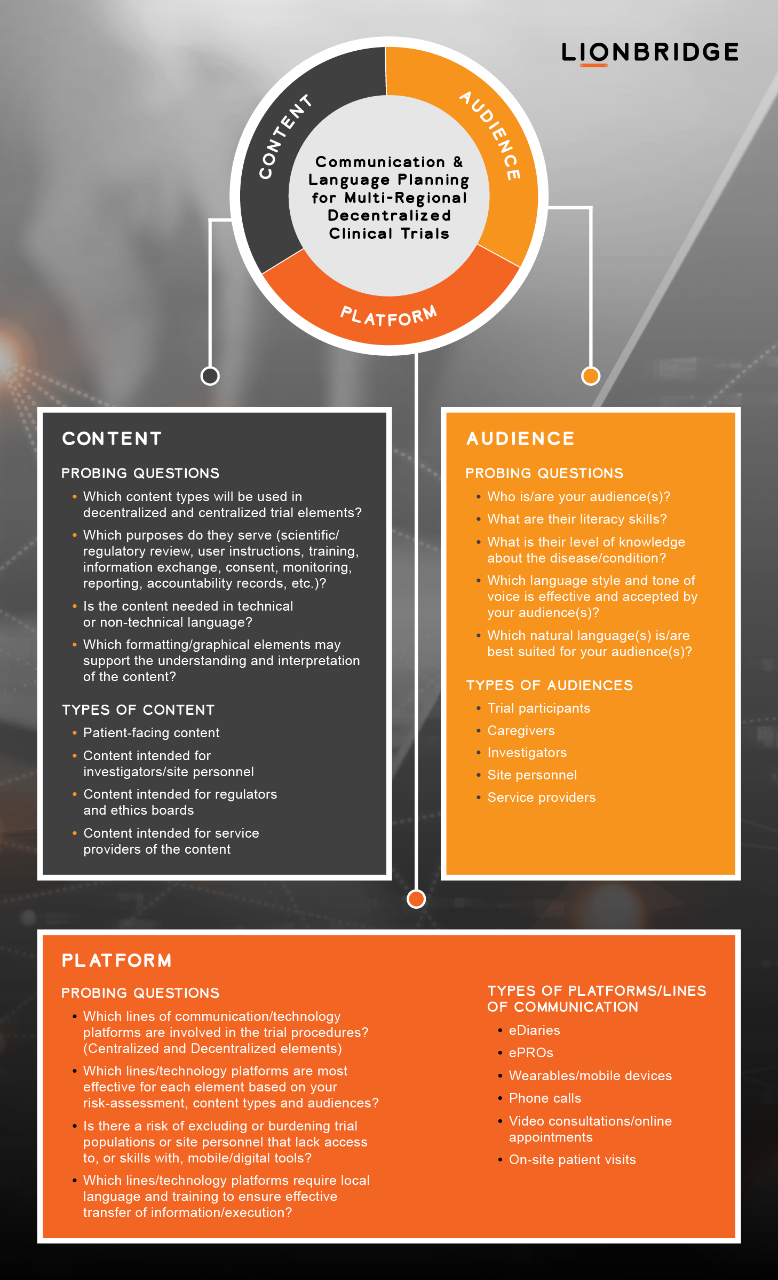- WHAT WE DO
Additional Services

- Industries

Case Study: Multilingual Retail Marketing
New AI Content Creation Solutions for a Sports and Apparel Giant

- RESOURCES

- WHO WE ARE

What We Do Home
Generative AI
- AI Translation Services
- Content Remix
AI Data Services
- Aurora AI Studio™
Machine Translation
- MT Tracker
Instant Interpreter
Customer Onboarding
Translation Service Models
Content Services
- Technical Writing
- Training & eLearning
- Financial Reports
- Digital Marketing
- SEO & Content Optimization
Translation Services
- Video Localization
- Software Localization
- Website Localization
- Translation for Regulated Companies
- Interpretation
- Instant Interpreter
- Live Events
- Language Quality Services
Testing Services
- Functional QA & Testing
- Compatibility Testing
- Interoperability Testing
- Performance Testing
- Accessibility Testing
- UX/CX Testing
Industries Home
Life Sciences Translations
- Pharmaceutical Translations
- Clinical Trial Translations
- Regulatory Translations
- Post-Approval Translations
- Corporate Pharma Translations
- Medical Device Language Services
- Validation and Clinical
- Regulatory Translations
- Post-Authorization Translations
- Corporate Medical Device Translations
- COA Translation Services
Banking & Finance
Retail
Luxury
E-Commerce
Games
Automotive
Consumer Packaged Goods
Technology
Industrial Manufacturing
Legal Services
Travel & Hospitality
Insights
- Blog Posts
- Case Studies
- Whitepapers
- Solution Briefs
- Infographics
- eBooks
- Videos
Webinars
Lionbridge Knowledge Hubs
- Positive Patient Outcomes
- Modern Clinical Trial Solutions
- Patient Engagement
- AI Thought Leadership
SELECT LANGUAGE:
In a prior blog about Multi-Regional Clinical Trials, the Lionbridge Life Sciences translation service team recommended that trial managers establish a language strategy during their trial planning for multilingual clinical trials (MRCTs). This follow-up makes a similar case for multi-regional Decentralized Clinical Trials (DCTs), where some or all trial procedures are conducted remotely outside the traditional clinical research facility. Lionbridge argues that communication and language are critical and trial-specific elements in successful DCT planning and execution. This is partly due to the reduced in-person contact between study teams and trial participants in virtual trial settings. It’s also partially due to diverse communication settings involved in the conduct of decentralized or hybrid trials.
What are Regulators Saying about Decentralized Clinical Trials?
DCTs have been discussed extensively, particularly in relation to COVID-19. During the pandemic, virtual and remote elements were introduced in many trials to minimize and mitigate disruptions. The U.S. Food and Drug Administration (FDA), as well as the European Medicines Agency (EMA), have published recommendations on the conduct of DCTs. Unsurprisingly, these regulators’ primary concerns are:
- Reliability of trial results
- Participant Safety
- Participant Protection
- Participant Monitoring
The EMA recommends decentralizing one or more clinical trial elements based on so-called “critical-to-quality factors.” Critical-to-quality factors are defined in the ICH E8 guideline on General Considerations for Clinical Studies as “attributes of a study whose integrity is fundamental to the protection of study participants, the reliability and interpretability of the study results, and the decisions made based on the study results.” The ICH E8 guideline contains a list of considerations to help sponsors identify these factors. The list includes information intended for trial participants (which should be clear and understandable) and identification of relevant training needs. The guidance doesn’t mention communication or language otherwise.

While ICH E8 focuses little on communication and language, the EMA guidance on DCTs addresses more aspects of communication. This guidance includes:
- Establishment of effective communication lines
- Procedures for control of the constant information flow through digital tools
- Informed Consent communication
- Emergency communication plans
This guideline from December 2022 is useful for any trial sponsor who is considering including one or more decentralized trial elements.
Communication and Language as Critical-to-Quality Factors
Effective exchange of information and data across the remote or hybrid trial ecosystem and its stakeholders is critical for sound results, procedures, and decisions based on DCTs. Successful communication ensures content is created, processed, delivered, and received as intended. The audience can understand its purpose and message, and act as expected based on the information. Local language and translations for multi-regional clinical trials are vital to ensure communication is effectively transmitted and recipients understand.

DCTs using digital tools often face specific challenges because they have increased amounts of incoming data and more stakeholders involved in the flow of trial information. One example is technology service providers or local nursing networks replacing central patient care centers. Therefore, effective lines of communication and language provisions should be established and defined at the protocol development stage. As the EMA recommends, communication flow should be specified in the protocol, and there should be written agreements between sponsor, investigator, and any other service providers.
Three Areas for Defining Communication and Language Needs for Decentralized Clinical Trials
Trial Management benefits from proactively mapping and planning communication flow across content, audiences, and communication lines/platforms. This tactic ensures that any communication and language elements identified as “critical-to-quality factors” are addressed and included in the clinical trial application.
We propose this model below. It contains probing questions about these areas in the trial setup:
- Content
- Audiences
- Platforms
This model can help trial managers make communication and language decisions for decentralized as well as centralized trial elements. Language planning is vital for a strong communication plan. The plan should clarify when translations are needed to facilitate communication and ultimately drive patient compliance and positive patient outcomes.
Get in touch
Need assistance in language planning for DCTs? Looking for help sharing more effective multilingual communications, such as clinical research participant recruiting materials, with various audiences? We have the technology, clinical trial translation expertise, and experienced project management team to provide the clinical trial research translations you need. Contact us today to find out more about Lionbridge’s clinical translation services.




